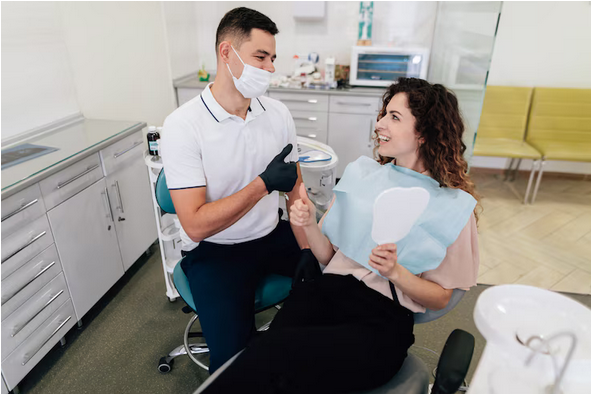In today's fast-paced world, technology is constantly evolving, and the field of dentistry is no exception. Dentists in Wolverhampton are at the forefront of this evolution, utilizing the latest advancements to provide high-quality care to their patients. This article explores how these professionals incorporate cutting-edge technology into their practices, enhancing patient experience, improving treatment outcomes, and ensuring the highest standards of dental care.
1. Introduction to Modern Dentistry
The integration of technology in dentistry has transformed the way dental professionals diagnose, treat, and interact with patients. Modern dental practices leverage various technological innovations, from digital imaging to advanced treatment methodologies, making dental visits more efficient and less intimidating for patients.
Importance of Technology in Dentistry
The importance of technology in dentistry cannot be overstated. It allows for:
- Improved Accuracy: Digital tools provide precise measurements and images, ensuring accurate diagnoses.
- Enhanced Patient Comfort: Technologies such as laser dentistry reduce discomfort associated with traditional methods.
- Streamlined Processes: Automation facilitates more efficient patient management and treatment workflows.
2. Digital Imaging and Diagnostics
2.1. Intraoral Cameras
Intraoral cameras are small, pen-like devices that capture high-resolution images of the inside of a patient's mouth. These cameras enable dentists to diagnose conditions more accurately by providing a clear view of hard-to-see areas. Patients can also view these images in real time, fostering a better understanding of their dental health.
2.2. Cone Beam Computed Tomography (CBCT)
CBCT technology provides 3D images of a patient's dental structures, including bones and soft tissues. This imaging technique allows for more accurate assessments, particularly in complex cases such as dental implants or orthodontics. The ability to visualize anatomical structures in three dimensions significantly enhances treatment planning.
3. Treatment Technologies
3.1. Laser Dentistry
Laser technology has revolutionized various dental procedures, including cavity treatment, gum reshaping, and teeth whitening. Lasers can minimize bleeding, reduce discomfort, and shorten recovery times, making procedures less invasive and more efficient. This technology is particularly beneficial for patients with dental anxiety, as it often eliminates the need for traditional drills.
3.2. CAD/CAM Technology
Computer-Aided Design and Computer-Aided Manufacturing (CAD/CAM) allow dentists to create dental restorations, such as crowns and bridges, in a single visit. The process involves scanning the patient's mouth, designing the restoration digitally, and then fabricating it using an in-office milling machine. This technology not only saves time but also ensures a perfect fit, enhancing patient satisfaction.
4. Patient Management Systems
4.1. Electronic Health Records (EHR)
The transition from paper records to Electronic Health Records (EHR) has streamlined the management of patient information. EHR systems provide quick access to patient histories, treatment plans, and billing information, improving overall efficiency in dental practice wolverhampton. This technology enhances communication among dental staff and allows for better coordination of care.
4.2. Online Appointment Scheduling
Many dental practices in Wolverhampton now offer online appointment scheduling systems, allowing patients to book their visits at their convenience. This feature not only improves patient satisfaction but also optimizes the practice's scheduling efficiency.
5. Tele dentistry
5.1. Virtual Consultations
Tele dentistry has gained traction, particularly following the COVID-19 pandemic. Dentists can conduct virtual consultations, allowing patients to discuss their concerns without needing to visit the office. This approach is especially beneficial for follow-up appointments or initial assessments, saving time for both patients and dental professionals.
5.2. Remote Monitoring
Some practices utilize remote monitoring technologies to track patients' progress after procedures. For instance, patients can use apps to report their recovery status or share images of their healing tissues. This ongoing communication allows dentists to address any concerns promptly and adjust treatment plans as necessary.
6. Preventive Care Technologies
6.1. Oral Health Apps
Dentists are increasingly recommending oral health apps to help patients monitor their dental hygiene routines. These apps can provide reminders for brushing, flossing, and scheduling regular check-ups. Some even offer educational resources to improve patients' understanding of their oral health.
6.2. Teledentistry for Preventive Care
Teledentistry platforms enable dentists to conduct preventive care consultations remotely. Patients can receive guidance on proper oral hygiene practices and nutritional advice, contributing to better overall dental health.
7. Training and Education
7.1. Continuous Professional Development
To stay updated with the latest technological advancements, dentists engage in continuous professional development. This involves attending workshops, seminars, and courses focused on new technologies and treatment methodologies. By investing in their education, dentists can ensure they are providing the best possible care.
7.2. Patient Education
Dentists in Wolverhampton prioritize patient education, using technology to inform patients about their conditions and treatment options. Informational videos, interactive software, and digital presentations can help demystify complex procedures, alleviating patient anxiety and fostering informed decision-making.
8. Sustainability and Eco-Friendly Practices
8.1. Digital Records and Communication
Transitioning to digital records not only enhances efficiency but also contributes to environmental sustainability. By reducing paper waste and promoting digital communication, dental practices can minimize their ecological footprint.
8.2. Eco-Friendly Materials
Many modern dental practices prioritize the use of eco-friendly materials in their treatments. For instance, some practices utilize biocompatible materials for fillings and crowns, reducing harmful waste and promoting patient safety.
9. Conclusion
The integration of technology in dentistry is an ongoing journey that significantly enhances patient care and treatment outcomes. Wolverhampton dentists are committed to staying ahead of the curve by adopting the latest advancements in digital imaging, treatment technologies, and patient management systems. These innovations not only streamline dental practices but also foster a more comfortable and engaging patient experience.
As technology continues to evolve, dental professionals will likely find even more ways to enhance their practices, ensuring that they provide the highest standard of care. Ultimately, this commitment to technological advancement benefits both dentists and their patients, paving the way for a healthier future for dental care in Wolverhampton and beyond.





Comments